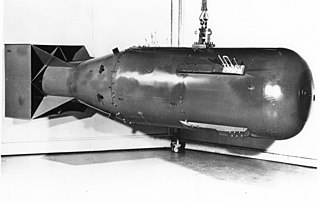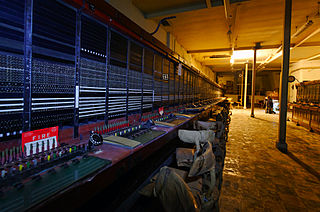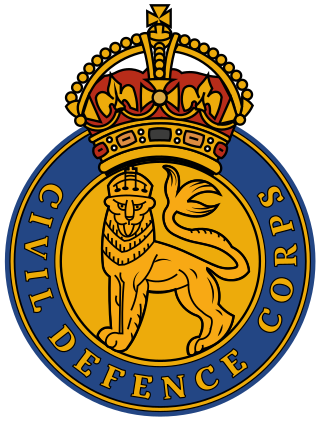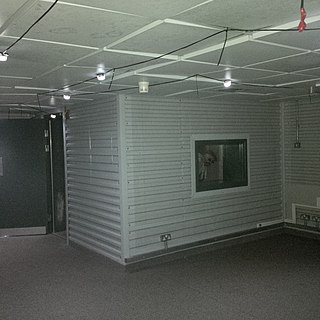- Taymouth Castle, the Python site for Scotland
- Remains of the Ministry of Defence buildings at Tonfanau, the temporary Python site for Wales
- Old College at Aberystwyth University, the later Python site for Wales
- MV Hebridean Princess, formerly RMS Columba, one of three car ferries designed as floating nuclear bunkers
Related Research Articles
Continuity of Operations (COOP) is a United States federal government initiative, required by U.S. Presidential Policy Directive 40 (PPD-40), to ensure that agencies are able to continue performance of essential functions under a broad range of circumstances. PPD-40 specifies certain requirements for continuity plan development, including the requirement that all federal executive branch departments and agencies develop an integrated, overlapping continuity capability, that supports the eight National Essential Functions (NEFs) described in the document.

Her Majesty's Yacht Britannia is the former royal yacht of the British monarchy. She was in their service from 1954 until 1997. She was the 83rd such vessel since King Charles II acceded to the throne in 1660, and is the second royal yacht to bear the name, the first being the racing cutter built for the Prince of Wales in 1893. During her 43-year career, the yacht travelled more than a million nautical miles around the world to more than 600 ports in 135 countries. Now retired from royal service, Britannia is permanently berthed at Ocean Terminal, Leith in Edinburgh, Scotland, where it is a visitor attraction with over 300,000 visits each year.

Continuity of government (COG) is the principle of establishing defined procedures that allow a government to continue its essential operations in case of a catastrophic event such as nuclear war.

RFA Engadine (K08) was a helicopter support ship of the Royal Fleet Auxiliary.

His Majesty's Naval Base, Clyde, primarily sited at Faslane on the Gare Loch, is one of three operating bases in the United Kingdom for the Royal Navy. It is the navy's headquarters in Scotland and is best known as the home of Britain's nuclear weapons, in the form of nuclear submarines armed with Trident missiles.
The Corsham Computer Centre (CCC) is an underground British Ministry of Defence (MoD) installation in Corsham, Wiltshire, built in the 1980s. According to the MoD, the centre "processes data in support of the Royal Navy". The centre has been similarly described by Des Browne in 2007, then Secretary of State for Defence, as a "data processing facility in support of Royal Navy operations".

The Central Government War Headquarters (CGWHQ) is a 35-acre (14 ha) complex built 120 feet (37 m) underground as the United Kingdom's emergency government war headquarters – the hub of the country's alternative seat of power outside London during a nuclear war or conflict with the Soviet Union. It is in Corsham, Wiltshire, in a former Bath stone quarry known as Spring Quarry, under the present-day MoD Corsham. In 1940, during the Second World War, the site was acquired by the Minister of Aircraft Production and used as an underground engine factory. The war headquarters was commissioned in 1955, after approval by Prime Minister Anthony Eden. However, it became outdated shortly after it was built, due to intercontinental ballistic missiles being able to target it, and the formulation of other plans. Nevertheless, the complex continued to have a role in war plans and remained in operation for 30 years.

The Hack Green Secret Nuclear Bunker is a former government-owned nuclear bunker located at Hack Green, Cheshire, England.

RAF Rudloe Manor, formerly RAF Box, was a Royal Air Force station north-east of Bath, England, between the settlements of Box and Corsham, in Wiltshire. It was one of several military installations in the area and covered three dispersed sites. Parts of the site are now used by Defence Digital within the MoD Corsham complex; other areas are vacant and some have been sold, including the 17th-century manor house, Rudloe Manor.

Taymouth Castle is situated to the north-east of the village of Kenmore, Perth and Kinross, in the Highlands of Scotland, in an estate which encompasses 450 acres (180 ha). It lies on the south bank of the River Tay, about 1 mile (1.6 km) from Loch Tay, in the heartland of the Grampian Mountains. Taymouth is bordered on two sides by mountain ranges, by Loch Tay on the third and by the confluence of the rivers Lyon and Tay on the fourth.

MV Lord of the Isles is one of the larger Caledonian MacBrayne vessels and operates from Mallaig on the west of Scotland. Built in Port Glasgow, she is the most-travelled vessel in the CalMac fleet.
Regional seats of government or RSGs were the best known aspect of Britain's civil defence preparations against nuclear war. In fact, however, naming conventions changed over the years as strategies in Whitehall changed.

The Kelvedon Hatch Secret Nuclear Bunker at Kelvedon Hatch, in the Borough of Brentwood in the English county of Essex, is a large underground bunker maintained during the Cold War as a potential regional government headquarters. Since being decommissioned in 1992, the bunker has been open to the public as a tourist attraction, with a museum focusing on its Cold War history.

The Civil Defence Corps (CDC) was a civilian volunteer organisation established in Great Britain in 1949 to mobilise and take local control of the affected area in the aftermath of a major national emergency, principally envisaged as being a Cold War nuclear attack. By March 1956, the Civil Defence Corps had 330,000 personnel. It was stood down in Great Britain in 1968, although two Civil Defence Corps still operate within the British Isles, namely the Isle of Man Civil Defence Corps and the unrelated Civil Defence Ireland in the Republic of Ireland. Many other countries maintain a national Civil Defence Corps, usually having a wide brief for assisting in large scale civil emergencies such as flood, earthquake, invasion, or civil disorder.

The Wartime Broadcasting Service is a service of the BBC that is intended to broadcast in the United Kingdom either after a nuclear attack or if conventional bombing destroyed regular BBC facilities in a conventional war. It is unclear if the Wartime Broadcasting Service is still operational as plans are kept mainly secretly with the BBC and government officials. According to an article by the BBC, recordings of a nuclear attack warning are still re-recorded and kept up to date periodically.

MV Hebridean Princess is a cruise ship operated by Hebridean Island Cruises. She started life as the MacBrayne car ferry and Royal Mail Ship, initially RMS then MV Columba, based in Oban for the first 25 years of her life, carrying up to 600 passengers, and 50 cars, between the Scottish islands.
The Maritime history of Scotland involves events including shipping, ports, navigation, and seamen, as well as marine sciences, exploration, trade, and maritime themes in the arts of Scotland.

David MacBrayne is a limited company owned by the Scottish Government. Formed in 1851 as the private shipping company David Hutcheson & Co. with three partners, David Hutcheson, Alexander Hutcheson and David MacBrayne, it passed in 1878 to David MacBrayne.

Tonfanau is a coastal village in the community of Llangelynnin, in Gwynedd, Wales. It is 2.4 miles (3.9 km) north of Tywyn. The village is served by Tonfanau railway station.
Operation Candid: Protection of the Royal Family in an Emergency was a Cold War contingency plan of the British Government to evacuate Queen Elizabeth II, the Duke of Edinburgh and other members of the British royal family from London in the event of nuclear war. The plan was devised in late 1962 following the Cuban Missile Crisis and approved the following year.
References
- 1 2 3 "How Scotland and three CalMac ferries played a crucial part in nuclear planning". The Herald. 22 January 2017.
- 1 2 Peter Hennessy (2014). The Secret State: Preparing For The Worst 1945 - 2010. Penguin. p. 141. ISBN 978-0141979205.
- ↑ CAB 21/5655 Government War Book, The National Archives
- ↑ "If nuclear war had broken out between Russia and the west, HMS Osprey on Portland would have been a remote hideaway for the government". Dorset Echo. 28 January 2017.



